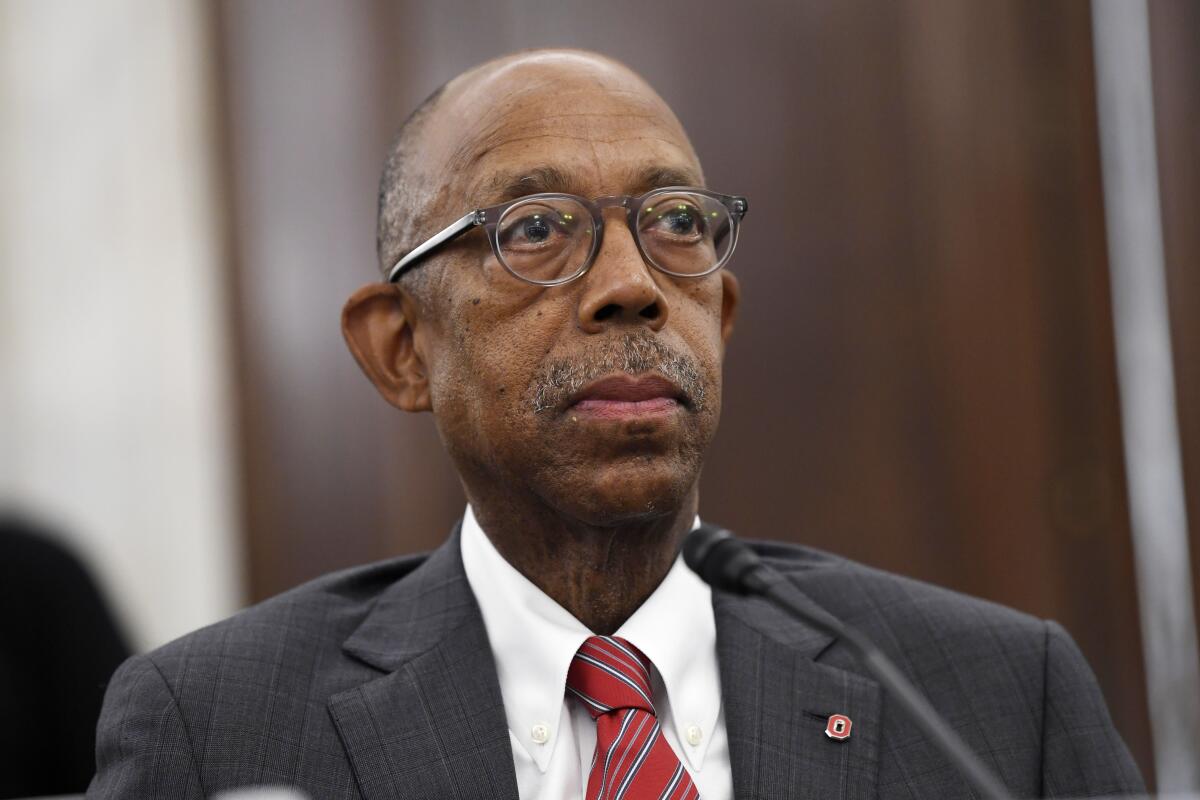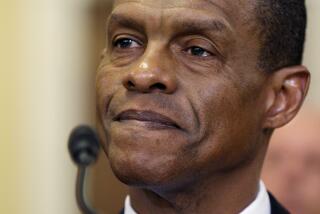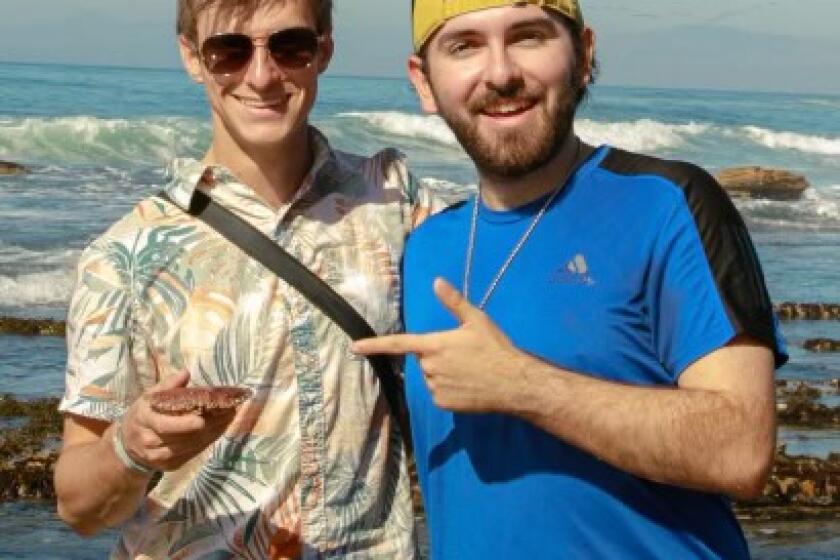UC President-elect Michael V. Drake knows firsthand about harsh police tactics

Michael V. Drake is the newly selected University of California president. He’s the former Ohio State University president and UC Irvine chancellor, a distinguished professor, a medical doctor, a Stanford University graduate.
As a Black man, however, he has been subjected to indignities by police that his professional pedigrees could not stop.
Drake, who turns 70 on Thursday, has been stopped and searched by law enforcement officers multiple times. The last time was about six years ago, he said, when he and a friend were pulled over by a sheriff’s deputy when they were driving home from Los Angeles International Airport and detained for 15 minutes for questioning. He was pulled aside so often at airports he used to program in extra time to get through them, he said.
“I am acutely and have been personally aware of the harsh and disrespectful policing that people of color face. I’ve faced it. My sons have faced it. It’s been a part of American life for all too long, and it’s something that needs to stop and we need to find better ways of being able to keep our communities safe,” Drake said in an interview.
As demands to defund police escalate across the country, Drake said campus security is one issue he intends to tackle when he takes the UC helm next month. Drake was unanimously selected this week by the UC Board of Regents to succeed outgoing President Janet Napolitano.
Drake said that campus safety is paramount — he said he has been heartbroken to have had to comfort the families of murdered students — but that it was time to rethink ways to secure it.
“The demilitarization of police and the working on of relationships between police and communities have a great deal of promise there,” he said. “I’m very eager to see if we can, in the moment, move to more respectful security for all of us so that we don’t have to be intimidated by those people whose charge it is to protect us.”
Tuition increase? Worth discussing
The UC system is facing significant financial insecurity, with a $1.2 billion hit in lost revenues and added costs in March and April due to the pandemic. Those losses have added to a decades-long financial squeeze on the state’s public universities. Some budget experts, such as UC Santa Barbara professor Christopher Newfield, have advocated a new financial model that returns UC to full public funding rather than increasing reliance on families to pay tuition.
Drake said UC will need “all hands on deck” to look for ways to increase income and reduce spending. That may include considering the kind of program he launched at Ohio State to raise tuition, fees, housing and dining costs once for each incoming class — usually about a 4% increase — and lock it in for four years. He said the program, along with increased financial aid, has resulted in a lower debt load on students and a higher number of graduates with no debt at all.
The guaranteed tuition model was first considered at UC a decade ago and more recently this year until regents shelved it amid the current economic distress. Drake said it was worth discussing again.
“Our goal is to do everything we can to enhance affordability for our students and their families,” he said. “And this is one method that was popular at my last institution.”
What does it take to increase diversity? ‘Elbow grease’
In recent months, UC leaders have taken high-profile moves to increase diversity, access and equity, including phasing out the SAT and ACT and backing a proposed constitutional amendment before state voters in November to remove restrictions on affirmative action. Those goals are close to Drake’s heart.
During his six-year term at Ohio State, the university boosted the number of students who are low-income, underrepresented minorities and the first in their families to attend college. Black students remain underrepresented, but Drake said his team arrested a 20-year slide in their enrollment and doubled their numbers from 260 in 2014 to 570 last fall. Their proportion of total enrollment has increased from 3.9% in 2014 to 6.8% in 2019.
Key strategies, Drake said, included active recruitment in communities of color beginning as early as middle school, using Ohio State students to help out. A big boost in need-based financial aid has also made a difference. Under the “Buckeye Promise,” for instance, Ohio State supplements Pell Grant awards to cover tuition entirely.
“We reached into communities to give greater access to students and then welcomed them enthusiastically,” he said. “We put a lot of elbow grease into it.”
Who does he work for? You
When Drake moves into his presidential office, he plans to bring a photo of a farmworker in a field hoeing a row.
The photo was given to him by Xóchitl Castañeda, director of Health Initiative of the Americas at the UC Berkeley School of Public Health. The two worked together for years on a California-Mexico health initiative.
After he became the UC vice president for health affairs in 2000, he said, a colleague told him the regents were now his bosses. Drake disagreed.
“I said I really think I’m working for the people in California. If you ask me who the boss is, it’s somebody who I’ll never meet, who won’t know that I exist. And if I do my work correctly, then his life and his family’s life will be better on a daily basis. And then a few years later, Xóchitl gave me the picture.
“And I said, well, that’s the guy. And so he’s been on my wall for 15 years.”
More to Read
Start your day right
Sign up for Essential California for news, features and recommendations from the L.A. Times and beyond in your inbox six days a week.
You may occasionally receive promotional content from the Los Angeles Times.







